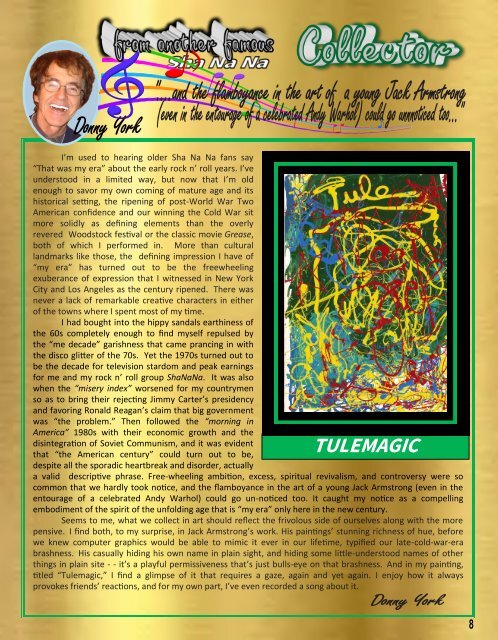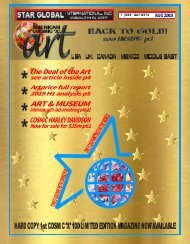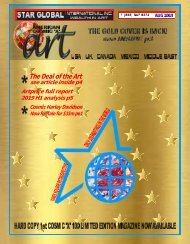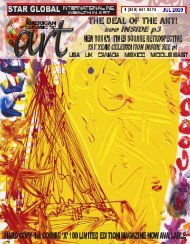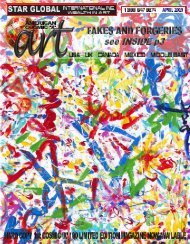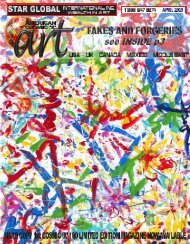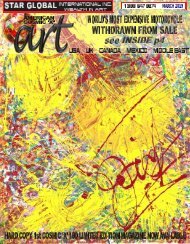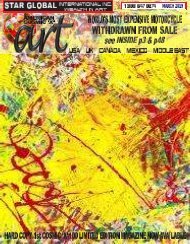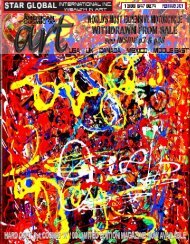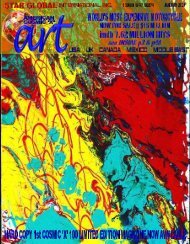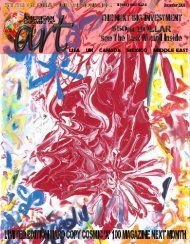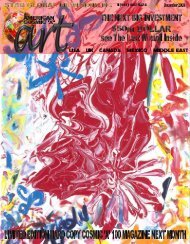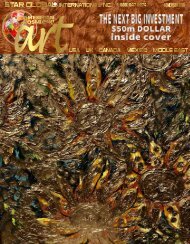MAG_COSMIC100_1b
You also want an ePaper? Increase the reach of your titles
YUMPU automatically turns print PDFs into web optimized ePapers that Google loves.
I’m used to hearing older Sha Na Na fans say<br />
“That was my era” about the early rock n’ roll years. I’ve<br />
understood in a limited way, but now that I’m old<br />
enough to savor my own coming of mature age and its<br />
historical setting, the ripening of post-World War Two<br />
American confidence and our winning the Cold War sit<br />
more solidly as defining elements than the overly<br />
revered Woodstock festival or the classic movie Grease,<br />
both of which I performed in. More than cultural<br />
landmarks like those, the defining impression I have of<br />
“my era” has turned out to be the freewheeling<br />
exuberance of expression that I witnessed in New York<br />
City and Los Angeles as the century ripened. There was<br />
never a lack of remarkable creative characters in either<br />
of the towns where I spent most of my time.<br />
I had bought into the hippy sandals earthiness of<br />
the 60s completely enough to find myself repulsed by<br />
the “me decade” garishness that came prancing in with<br />
the disco glitter of the 70s. Yet the 1970s turned out to<br />
be the decade for television stardom and peak earnings<br />
for me and my rock n’ roll group ShaNaNa. It was also<br />
when the “misery index” worsened for my countrymen<br />
so as to bring their rejecting Jimmy Carter’s presidency<br />
and favoring Ronald Reagan’s claim that big government<br />
was “the problem.” Then followed the “morning in<br />
America” 1980s with their economic growth and the<br />
disintegration of Soviet Communism, and it was evident<br />
TULE<strong>MAG</strong>IC<br />
that “the American century” could turn out to be,<br />
despite all the sporadic heartbreak and disorder, actually<br />
a valid descriptive phrase. Free-wheeling ambition, excess, spiritual revivalism, and controversy were so<br />
common that we hardly took notice, and the flamboyance in the art of a young Jack Armstrong (even in the<br />
entourage of a celebrated Andy Warhol) could go un-noticed too. It caught my notice as a compelling<br />
embodiment of the spirit of the unfolding age that is “my era” only here in the new century.<br />
Seems to me, what we collect in art should reflect the frivolous side of ourselves along with the more<br />
pensive. I find both, to my surprise, in Jack Armstrong’s work. His paintings’ stunning richness of hue, before<br />
we knew computer graphics would be able to mimic it ever in our lifetime, typified our late-cold-war-era<br />
brashness. His casually hiding his own name in plain sight, and hiding some little-understood names of other<br />
things in plain site - - it’s a playful permissiveness that’s just bulls-eye on that brashness. And in my painting,<br />
titled “Tulemagic,” I find a glimpse of it that requires a gaze, again and yet again. I enjoy how it always<br />
provokes friends’ reactions, and for my own part, I’ve even recorded a song about it.<br />
8


